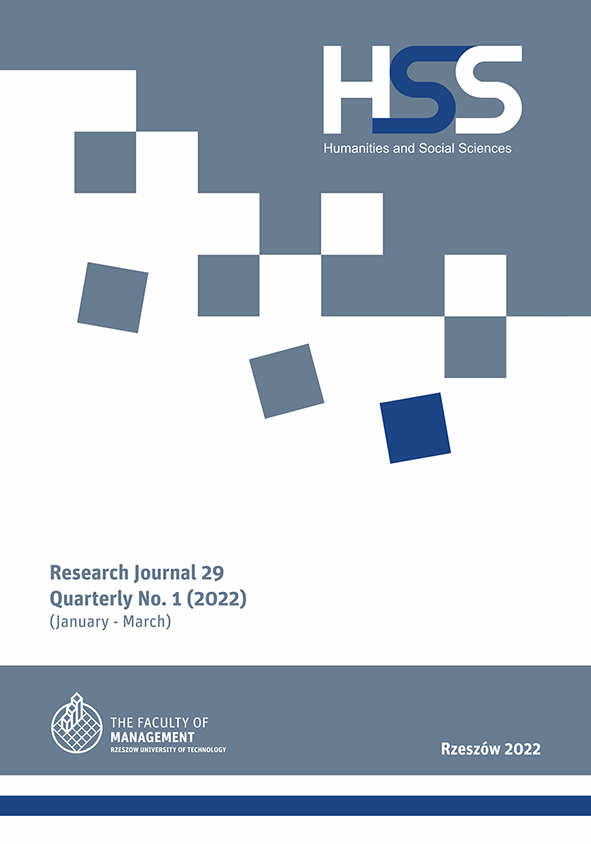Abstrakt
Language and culture are two elements that predominate in our existence. According to Grzegorczykowa, language is like air. It is needed in order to create and depict culture. It is a form of behaviour, a way of thinking and understanding the world around us. The language versatility and resourcefulness means that it can convey everything we contemplate. Therefore, its role in the linguistic system is of unparalleled importance. It performs a generative and cognitive function, and as a social phenomenon it plays a socialising role. Moreover, if the elements of culture are reflected in the language then press using written word as a tool in presenting news can be credited with coining new terms related to these cultural elements. The aim of the article is to present the influence of press in forming new idiomatic expressions.
Bibliografia
Algeo, J., Butcher, C. (2013). The Origins and Development of the English Language. Boston USA: Cengage Learning.
Bussmann H. (2006). Routledge Dictionary of Language and Linguistics. Trauth, G. P., Kazzazi, K. (eds.), London and New York: Routledge.
Cacciari, C., Tabossi, P. (2014). Idioms: Processing, Structure, and Interpretation. New York and London: Psychological Press.
Cameron, S. (2003). Multiple Analogies in Science and Philosophy. Amsterdam: John Benjamin Publishing.
Dupriez, B. M. (1991). A Dictionary of Literary Devices: Gradus A–Z. Toronto and Buffalo: University of Toronto Press.
Glucksberg, S. (2001). Understanding Figurative Language: From Metaphors to Idioms. Oxford: Oxford University Press.
Glaz, A., Danaher, D., Łozowski, P. (2013). The Linguistic Worldview: Ethnolinguistics, Cognition, and Culture. Great Britain: Versita.
Grant, L., Bauer, L. (2004). Criteria for re-defining idioms: Are we barking up the wrong tree?, “Applied Linguistics”, 25.
Harley, T. A. (2001). The Psychology of Language: From Data to Theory, Taylor & Francis.
Jack, A. (2005). Red Herrings & White Elephants – The Origins of the Phrases We Use Every Day. London: Metro Publishing.
Lakoff, G., Johnson, M. (1980). Metaphors We Live by. Chicago and London: The University of Chicago Press.
Krąpiec, M. A. (1983). I-man: An Outline of Philosophical Anthropology, Mariel Publications.
Malinowski, B. (1944). A scientific theory of culture and other essays. Chapel Hill: The University of North Carolina Press.
Mäntylä, K. (2004). Idioms and Language Users: The Effect of the Characteristics of Idioms on their Recognition and Interpretation by Native and Non-Native Speakers of English. PhD Dissertation. Jyväskylä: University of Jyväskylä.
Moon, R. (1998). Fixed Expressions and Idioms in English: A Corpus-Based Approach. Oxford: Clarendon Press.
Riegler, A., Peschl, M., Stein, A. (2007). Understanding Representation in the Cognitive Sciences: Does Representation Need Reality? Springer.
Tabossi, P., Zardon, F. (1993). The activation of idiomatic meaning in spoken language conversation [In:] Cacciari, C., Tabossi, P. (eds.), Idioms: Processing, Structure and Interpretation (p. 145–162). Hilldale, NJ: Lawrence Erlbaum Associates.
Thyab, R. A. (2016). The necessity of idiomatic expressions to English language learner. “International Journal of English and Literature”, 7.
Underhill, J. (2009). Humboldt, Worldview and Language, Edinburgh University Press.
Winawer, J., Witthoft, N., Frank, M.C., Wu, L., Wade, A. R., Boroditsky, L. (2007). Russian blues reveal effects of language on color discrimination, PNAS.
Whorf, B. L. (1956). Language, Thought, and Reality: Selected Writings of Benjamin Lee Whorf, MIT Press.
Wood, M. M. (1986). A Definition of Idiom. Bloomington Indiana: Indiana University Linguistics Club.
Zhan, D., Bai, J. (2015). A cognitive semantic study of idioms from The Book of Songs [In:] Lu, Q., Gao, H. H. (eds.) Chinese Lexical Semantics (p. 3–14). Beijing China: Springer.


